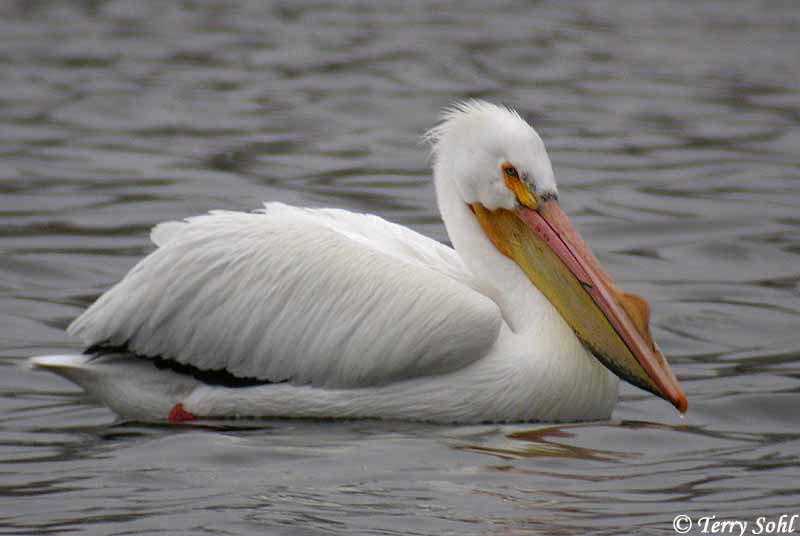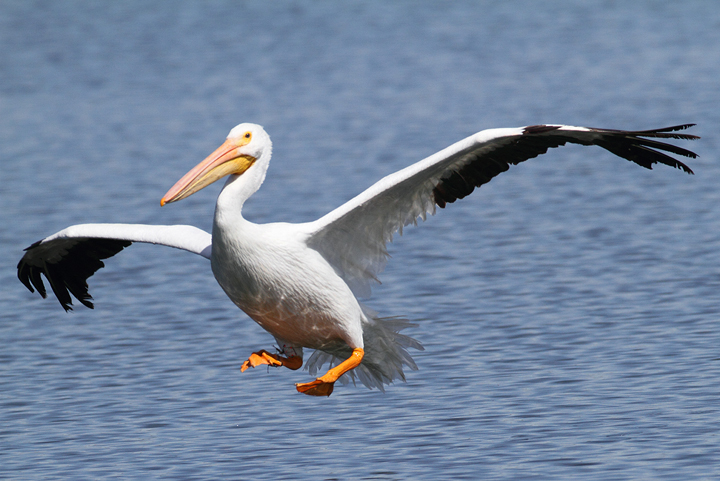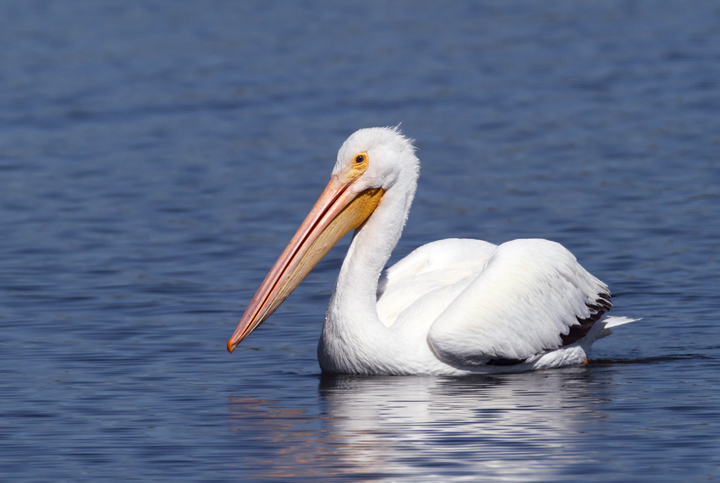
Pelecanus erythrorhynchos
TAXONOMY
Pelecanus erythrorhynchos Gmelin, 1789, Hudson Bay and New
York. Monotypic.
OTHER COMMON NAMES
English: Rough-billed pelican, white pelican; French: Pйlican а
bec rouge; German: Nashornpelikan; Spanish: Pelнcano Nortamericano.
PHYSICAL CHARACTERISTICS
47–70 in (120–178 cm); 8–17 lb (3.6–7.7 kg). White with yellowish
gray crest and black wingtips. During breeding season,
they develop a knob on the top of the orange bill.
DISTRIBUTION
Summers in western North America and southeast Texas,
USA. Winters in California, Arizona, southeastern USA, and
Mexico.
HABITAT
Rivers, lakes, estuaries, and seacoasts.
BEHAVIOR
Territorial during breeding season. Pair bonds strengthened by
head bowing in the direction of one another and strutting walk
in which male closely follows female, both with crests raised
and pouches resting on chests.
FEEDING ECOLOGY AND DIET
Feed while swimming and do not dive into the water. Communal
forager of various fish, typically those of little commercial
value such as carp (Cyprinus). Also eat salamanders (Ambystoma)
and their larvae.
REPRODUCTIVE BIOLOGY
Ground nests are constructed from plant material. Usually lays
two eggs in the spring; incubates for four weeks. Nestlings aggregate
in crиches by four weeks of age; fledge at nine weeks;
independent at 12 weeks.
CONSERVATION STATUS
Not threatened. Population may be increasing after significant
erosion throughout much of twentieth century. Several new
breeding colonies recorded in the 1980s and 1990s.
SIGNIFICANCE TO HUMANS
May interact with fishermen but to a lesser degree than brown
pelicans. Appears with young in logo of a North American insurance
company as embodiment of mutual aid.
Other popular Animals
Photo Gallery of - American white pelican




 Animalia Life
Animalia Life